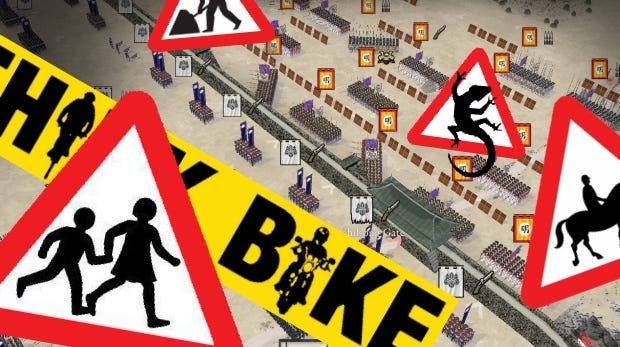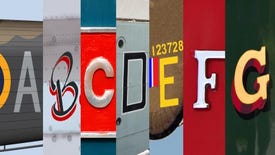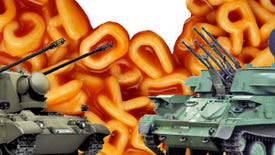The Flare Path: Games Of Hazard
Wargame and simulation blather
Thanks to Slitherine's silly no-prices-until-release-day policy I can't tell you whether Sengoku Jidai: Shadow of the Shogun, out next Thursday, will be sensibly tariffed. What I can say - but am slightly reluctant to just in case my positivity persuades the Surrey lizardmen to whack a few quid on the RRP - is that this samurai-stuffed Pike & Shot spin-off is currently my favourite wargame of 2016.
By rights I should prefer Pike & Shot: Campaigns to its Oriental semi-sequel (despite Creative Assembly's and Paradox's best efforts I'm still more interested in Monck's warriors than warrior monks). However, Sengoku Jidai transcends thematic sympathies by blending P&S's wonderfully turbulent turn-based battles with a new and colourful unit mix, some well thought-out tactical enhancements, and a perfectly chosen and executed art style.
Forces now boast multiple named and stat-sporting commanders that steel nearby units and make them more mobile. A unit with an attached commander (generals may be moved from one unit to another in the midst of battle) is formidable in melee, but you never hurl a big-wigged battalion into the fray without a twinge of trepidation. Sometimes opposing generals involved in the same close combat will search each other out. One of Sengoku Jidai's most alarming sights is the fast-fading 'General Fallen' message that occasionally follows the 'Duel In Progress' one.
The loss of an inspirational leader can be the butterfly wing-beat that causes an entire frontline to crumble. In Richard Bodley-Scott's friendly yet flavoursome simulations of pitched pandemonium, panic is contagious and sometimes a single automatic pursuit (units sometimes become uncontrollable after dislodging an enemy) has far-reaching repercussions. I've said it before but it's worth repeating – the P&S engine produces battles that pulsate and pivot in an uncommonly believable and beguiling manner. Most alternative titles feel lumpen and predictable in comparison.
With fewer firearms and mixed units about in Sengoku Jidai, I'm finding it easier to read the battlefield. Partially due to crisper graphics and new 'unit type' icons (bow, spear, or firearm) rocks tend to look more like rocks; it's generally easier to distinguish paper from scissors. If information about unit quality and capabilities was available via toggleable icons as well as unit cards, unnecessary mousework would be all-but eliminated.
In terms of improvements, it's hard to work out where Byzantine Games could or should head next. If I had Richard Bodley Scott's ear, I think I'd be lobbying for better audio (the firearms sound effects are as repetitive as ever) and campaign enrichment. Sengoku Jidai comes with four dynamic campaigns* - Tenka Fubu, Sengoku Jidai, Imjin War, and Sekigahara - each of which uses a cellular strat map to spark battles on randomly-generated battlefields. Although new neutral factions that can be tempted into alliances with cash gifts add a little extra colour to the province poaching, the inter-battle army recruiting, splitting, combining, and moving remains a somewhat dessicated business. I'm sure elements like espionage, civil engineering, and naval warfare could be delicately and profitably introduced without distracting from the game's main attraction, those marvellous, endlessly varied pitched battles.
*Customisable skirmishes, multiplayer, and 20+ historical engagements are also available
* * * * *

According to Hazard Perception Test UK 2016/17, a one-button 'driving sim' released last week on Steam, I should toss my car keys into the nearest canal/volcano/sarlacc ASAP. It's simply not safe for me to be trundling about on the public highway.
HPT claims to accurately simulate the DVSA hazard perception test that all British learners must pass in order to secure a full driving licence. Being Austin Allegro-old, I secured my licence in the days before such hurdles were erected, and being Austin Princess-proud I naturally assumed I'd sail through Imagitech's recreation with no trouble whatsoever. I really wasn't expecting...
I've taken the test four times now and failed on three occasions. If Hazard Perception Test UK 2016/17 really is representative of the real thing then my heart goes out to all of the UK's aspiring automobilists. I knew you had to be well-heeled to become a young driver in modern Britain, I had no idea you also had to have the eyesight of a raptor and the mind-reading capabilities of a Chrysalid.
The £9 Hazard Perception Test UK 2016/17 bundle comes with 160 one-minute through-the-windscreen video clips, fourteen of which are randomly selected for each test. To score the maximum five points for a particular clip it's essential you mouse-click as soon as you spot a potential road hazard developing. Lorry drifting into your lane? LMB! Pram about to roll off the pavement? LMB! Werehedgehog with assault rifle on next overbridge? LMB!
The slower you are at spotting hazards the fewer points you score, which makes the software's relatively low resolution and (sometimes) gloomy footage a significant issue. An extreme example below. Somewhere in that murk is a 4x4 cheekily nipping out onto a roundabout. By the time I'd clocked it there was only a piffling 1pt up for grabs.
Very quickly you find yourself greeting every suspicious pixel smudge in the far distance with a click. Surprisingly the sim implies this is a perfectly legitimate tactic. To activate the score-zeroing cheat warning, seriously demented woodpecker tapping is required.
Even when the light levels are good and potential danger is close, it's not always obvious which hazard is the clip's point scorer. In one sequence a jaywalking jogger and a disobedient dog on a pedestrian crossing were deemed insignificant while a van approaching on a two-lane bridge was meant to trigger alarm. In another, two situations that made my right foot twitch instinctively (large piece of litter blowing into road and a cyclist exiting a pub car park at speed before proceeding on the wrong side of the road) were ignored in favour of a clearly visible car waiting to execute a run-of-the-mill right turn. I find it hard to believe that the DVSA's clips are as pixelated or potentially confusing as Imagitech's.
And yet, for all its flaws Hazard Perception Test UK 2016/17 has made me think about how I risk assess while driving (never a bad thing). It's also caused me to reflect on the heartbreakingly simplistic way most bus, truck and production car simulations model the complex environment that is a public road. With the notable exception of City Car Driving which has recently added potholes and jaywalkers jaysprinters to its urban spaces, I put it to you that most of our non-competitive driving games ignore arguably the most interesting aspect of everyday driving – the myriad steering, gear, and pedal inputs prompted by unpredictable emergent hazards.
* * * * *

























